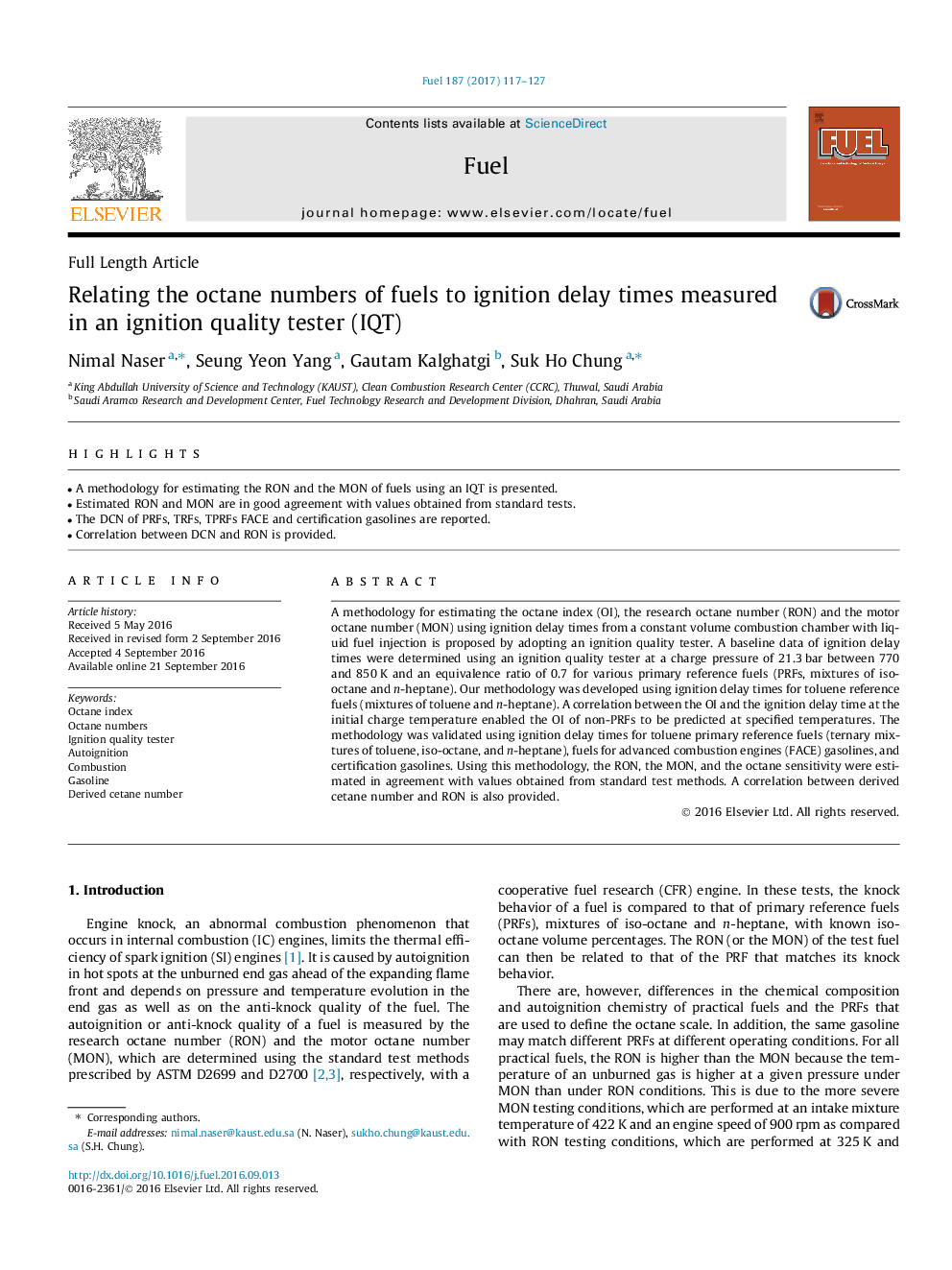| Article ID | Journal | Published Year | Pages | File Type |
|---|---|---|---|---|
| 6475924 | Fuel | 2017 | 11 Pages |
â¢A methodology for estimating the RON and the MON of fuels using an IQT is presented.â¢Estimated RON and MON are in good agreement with values obtained from standard tests.â¢The DCN of PRFs, TRFs, TPRFs FACE and certification gasolines are reported.â¢Correlation between DCN and RON is provided.
A methodology for estimating the octane index (OI), the research octane number (RON) and the motor octane number (MON) using ignition delay times from a constant volume combustion chamber with liquid fuel injection is proposed by adopting an ignition quality tester. A baseline data of ignition delay times were determined using an ignition quality tester at a charge pressure of 21.3Â bar between 770 and 850Â K and an equivalence ratio of 0.7 for various primary reference fuels (PRFs, mixtures of iso-octane and n-heptane). Our methodology was developed using ignition delay times for toluene reference fuels (mixtures of toluene and n-heptane). A correlation between the OI and the ignition delay time at the initial charge temperature enabled the OI of non-PRFs to be predicted at specified temperatures. The methodology was validated using ignition delay times for toluene primary reference fuels (ternary mixtures of toluene, iso-octane, and n-heptane), fuels for advanced combustion engines (FACE) gasolines, and certification gasolines. Using this methodology, the RON, the MON, and the octane sensitivity were estimated in agreement with values obtained from standard test methods. A correlation between derived cetane number and RON is also provided.
